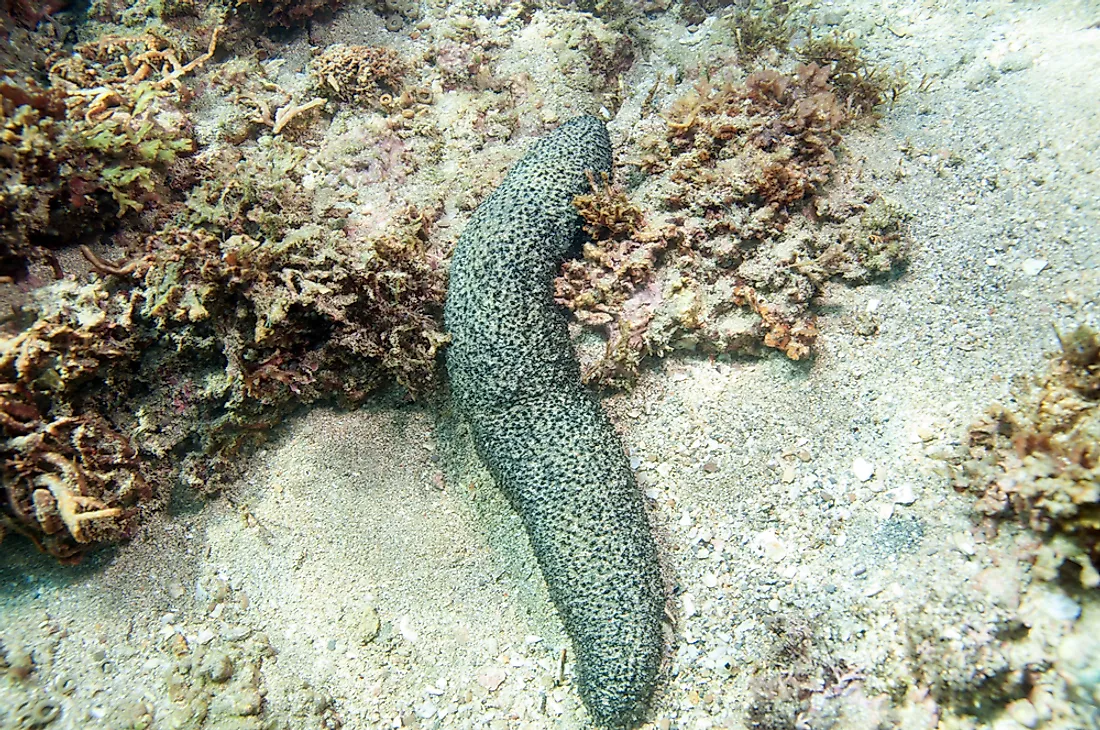Sea Cucumber Facts - Animals of the Oceans

Sea cucumbers are aquatic animals with elongated cylindrical bodies and leathery skin. They are named for their resemblance to the fruit of the cucumber plant. They belong to the same family as starfish and sea urchins. There exists over 1,250 species of sea cucumbers around the world, and they compromise 90% of all sea creatures forming dense populations on the sea floor.
Physical Description
Sea cucumbers belong to the kingdom Animalia, phylum Echinodermata, and class Holothuroidea. These animals belong to a variety of orders, which we can base their identification. The orders include Apodida, Aspidochirotida, Dendrochirotida, and Elasipodida.
They are soft-bodied sea animals with close to twenty tentacles at the mouth area. Some sea cucumber animals have thick muscular bodies while others have the jelly-like bodies. They are similar to snails and slugs. The tentacles are usually fingerlike.
Behavior
Sea cucumbers are nocturnal creatures that are active at night. The average lifespan of sea cucumber creatures is between five and ten years.
Sea cucumbers have a variety of means of communicating with their kind. They secrete hormones, which they use in sending signals to others when they sense danger.
The animals also have a behaviour of liquefying their bodies in times of attack by hunters. They are also able to produce sticky substances that are the stick like which trap predators and enable them to escape. In case of attack by predators, the animals can tear off the part of their body under attack and escape, which later regrows after a few weeks.
Diet
Sea cucumbers feed on tiny animals like algae and other small animals like fish, plankton, and bacteria. The animals break down the food into smaller particles to be able to digest and after that recycling the feedback into the ecosystem.
Reproduction
The mode of reproduction in these animals is both sexual and asexual, but mostly the creatures partake sexual reproduction that involves the fusion of gametes. Mature females lay eggs in water, then the males are attracted to the eggs through a hormone they produce and spray millions of sperms on the eggs, which later develop into larvae. It is only a few out of the fertilised eggs that will grow to full growth and maturity. The females have an adaptation of producing thousands of eggs to ensure survival after hatching since they are very vulnerable to predators. The larvae take weeks before developing fully into the cucumber-shaped animals.











